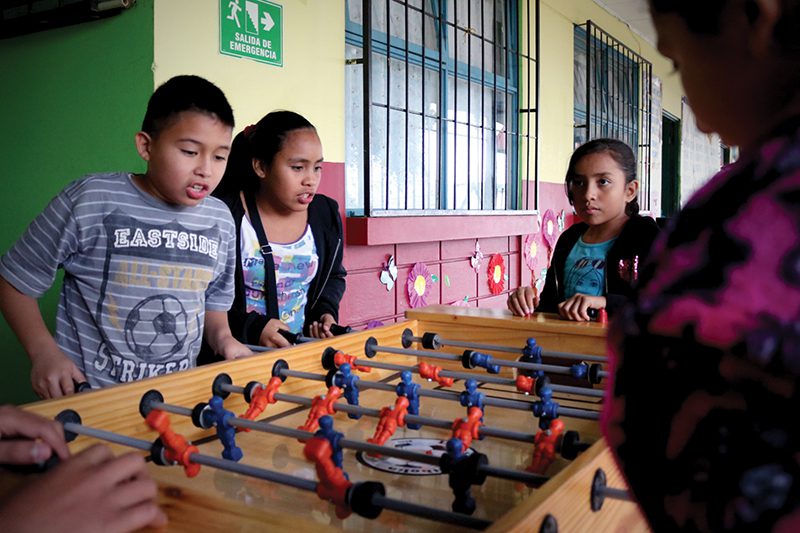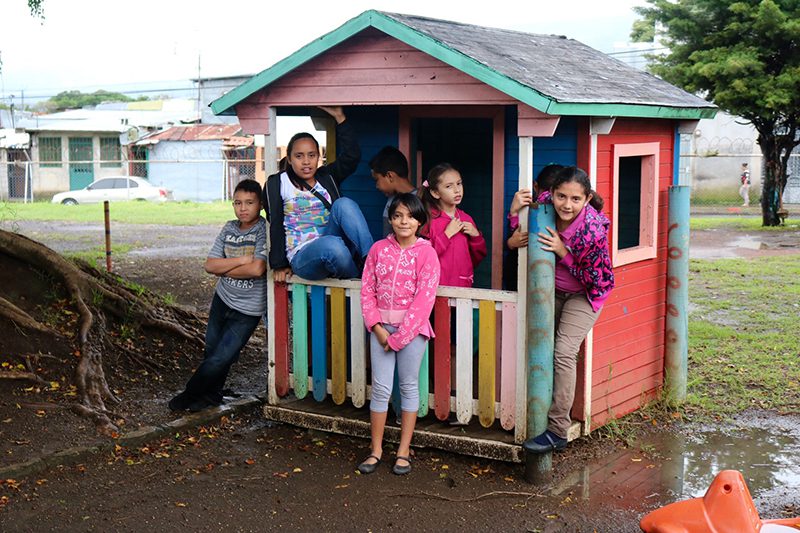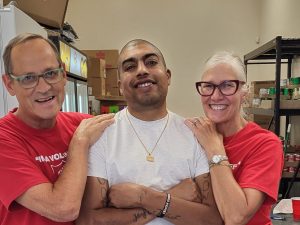The Salvation Army works in one of Costa Rica’s roughest neighborhoods to propel its youth up and out.
A half dozen children laugh and chase one another around a plastic yellow hippopotamus in the play yard of The Salvation Army León XIII Day Care Center in Costa Rica, skillfully avoiding the puddles from an earlier rain. The sun is barely shining through, but the future looks bright.
At the end of the yard, over a six-foot fence and across a narrow street, is a glaring reminder of the present. Rows upon rows of makeshift homes line the barrio, haphazardly bound by sheet metal, warped and rusted, yet somehow able to weather routine thunderstorms. Trash piles form semi-permanent homes, and feral dogs run rampant. It’s relatively quiet today, but don’t let that fool you. Halfway up the block lies a narrow crevice no wider than eight feet across.
“That’s the border,” said Yenifer Diaz, a former teacher at the daycare. It’s separating two rival neighborhoods entrenched in a longstanding turf war with little breathing room. And tension has boiled over at the worst of times.
Diaz carefully describes a scene from memory. It was last year in broad daylight. “The kids were outside playing, and all of a sudden, we started to hear gun[fire] across the street.”
She quickly ushered them into a vacant classroom, told them not to panic, and to sit in the desks farthest from the window.
“I was so scared,” Diaz said.
And the children?
“They were so relaxed. They said, ‘It’s OK, teacher. This is normal.’”
So normal, in fact, it’s happened two other times in the past year alone. What’s not normal is that kind of levelheadedness from a group of 7- and 8-year-old children in the face of a life-threatening situation.
“One kid said, ‘I know the guy shooting. He’s just drunk,’” Diaz said.
The León XIII neighborhood is named for a pope who asserted that science and religion could co-exist. In his namesake community a century later, few things co-exist. Experts say the roughly 16,000-resident barrio on San José’s northern edge has one of the highest rates of crime and drug use in the capital. The genesis of León XIII saw several nearby cities relocate their high-risk residents to the government housing project, plotted on a grid with a soccer field at its center. It is now one of the most densely populated parts of the entire country.
It’s been ransacked by gang violence and crack dealers for as long as most residents here can recall. In the Judicial Investigation Police’s 2015 annual report on violence in Costa Rica, León XIII rated as one of the five most dangerous districts in Costa Rica with 16 homicides in 2014. Shootings, as they’ve witnessed at the daycare, can happen at any time of the day.
“You can’t walk over there alone,” said the center’s principal, Raquel Chavez, eyeing the barrio. “It’s not possible.”

When kids become accustomed to violence, as many of the ones at The Salvation Army have, they no longer fear it, she said. According to a new study, growing up in poor neighborhoods significantly reduces the chances that a child will graduate from high school. And the longer a child lives in that kind of neighborhood, the more harmful the impact. Couple poverty with violence and drugs, and the odds can grow even taller.
“Some of their parents are in jail,” Diaz said.
And that’s part of the reason they work so hard at the center to equip kids to rise above it. According to Chavez, many jobs in San José require fluency in English and at least basic working knowledge of a computer.
“We teach them English and how to use computers because those are things they have to know how to do,” Chavez said.
While the education is merely a supplement to the instruction the kids receive at school, the staff takes the responsibility seriously. The León XIII center serves up to 75 kids, many middle-school aged, both before and after school, providing meals, snacks, fellowship and learning activities. It receives roughly 70 percent of its funding from the National Child Welfare Agency (PANI) and Joint Social Aid Institute (IMAS), which work to aid efforts of childhood growth and development.
But as Chavez noted, in order for them to grow and develop, they have to stay alive.
“Most importantly, we have to keep them safe here,” Chavez said. “To have a life [beyond this neighborhood].”












